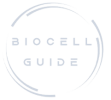BioCell Collagen Glossary
This cartilage is specific to the synovial joint, a joint which is the most common in the body. Its major components include collagen type II, HA, and chondroitin sulfate.
It is defined as a proportion of the nutrient that is digested, absorbed and metabolized. Bioavailability should be regarded as a more important issue than how much a nutrient is present in a dietary supplement because the nutrient must be absorbed and available at the site of action.
The only resident cells in the articular cartilage. They produce all molecules essential for the cartilage structure.
A type of mucopolysaccharides called GAG (glycosaminoglycan), which is essential for the structure and function of the connective tissue. It provides cushion and resistance to external forces.
The most predominant protein in the body. A number of different types of collagen have been discovered among which type I/III and type II are the major types for the skin dermis and for the articular cartilage, respectively.
Collagenous fibers are large, strong fibers, most commonly Type I collagen, that provide high tensile strength to dense and loose connective tissue.
A type of tissues found in the body and its function is connecting (gluing) other tissues and organs.
Elastic fibers are thin, branching fibers found in tissues such as the aorta, lung, skin, and vocal cords that provide stretch and recoil to the extracellular matrix.
Fibroblast growth factors (FGF) have elicited studies to evaluate their role of repair and remodeling of the dermis during the skin anti-aging process, since they are regulatory proteins that mediate important signaling pathways and act on cell regeneration and repair processes.
Fibroblast has a relevant role in anti-aging therapy because it is related to collagen and elastin synthesis activation responsible for skin resistance and elasticity, characteristics that are diminished with skin aging.
Citation : https://www.karger.com/Article/Fulltext/501145#ref12
They include HA, chondroitin sulfate, and dermatan sulfate and are embedded into collagen fibrillar network of the skin dermis.
A type of mucopolysaccharides called GAG (glycosaminoglycan), which is essential for the structure and function of the connective tissue. It provides hydration and lubrication by retaining water molecules.
Hydrolyzed collagen cannot form scaffolds on its own due to the low molecular weight of its peptides, but it can be combined with other copolymers such as cellulose and chitosan to form scaffolds. It consists of “dead-protein.” This type of collagen is produced primarily from nonbioavailable connective tissue. The derived source must undergo hydrolysis and an aggressive chemical process; consequently, it is composed of “post-collagen” amino acids.
Aging process associated with one’s age. Also called chronological aging.
Non-Hydrolyzed Collagen is the “purest form” of collagen. Non-hydrolyzed collagen retains significantly more of its native triple helical protein structure, allowing for greater molecular and scaffolding stability during wound healing. To improve thermal stability, mechanical strength, and the ability to engage in precise interactions with other biomolecules, it is essential that collagen maintains its triple helix structure.
Aging process associated with the chronic exposure of the body to sunlight. UV light is known to accelerate natural aging process by breaking down collagen and HA.
The skin is the largest organ in the body. The dermis layer consists of the connective tissue and the most important in youthful appearance. The connective tissue in the dermis contains collagen type I/III, elastin, and HA etc.
Together with the articular cartilage, the synovial fluid characterizes the synovial joint which is involved with our physical motions. HA is the major lubricating substance in the fluid.
The most common and active joint in the body.

